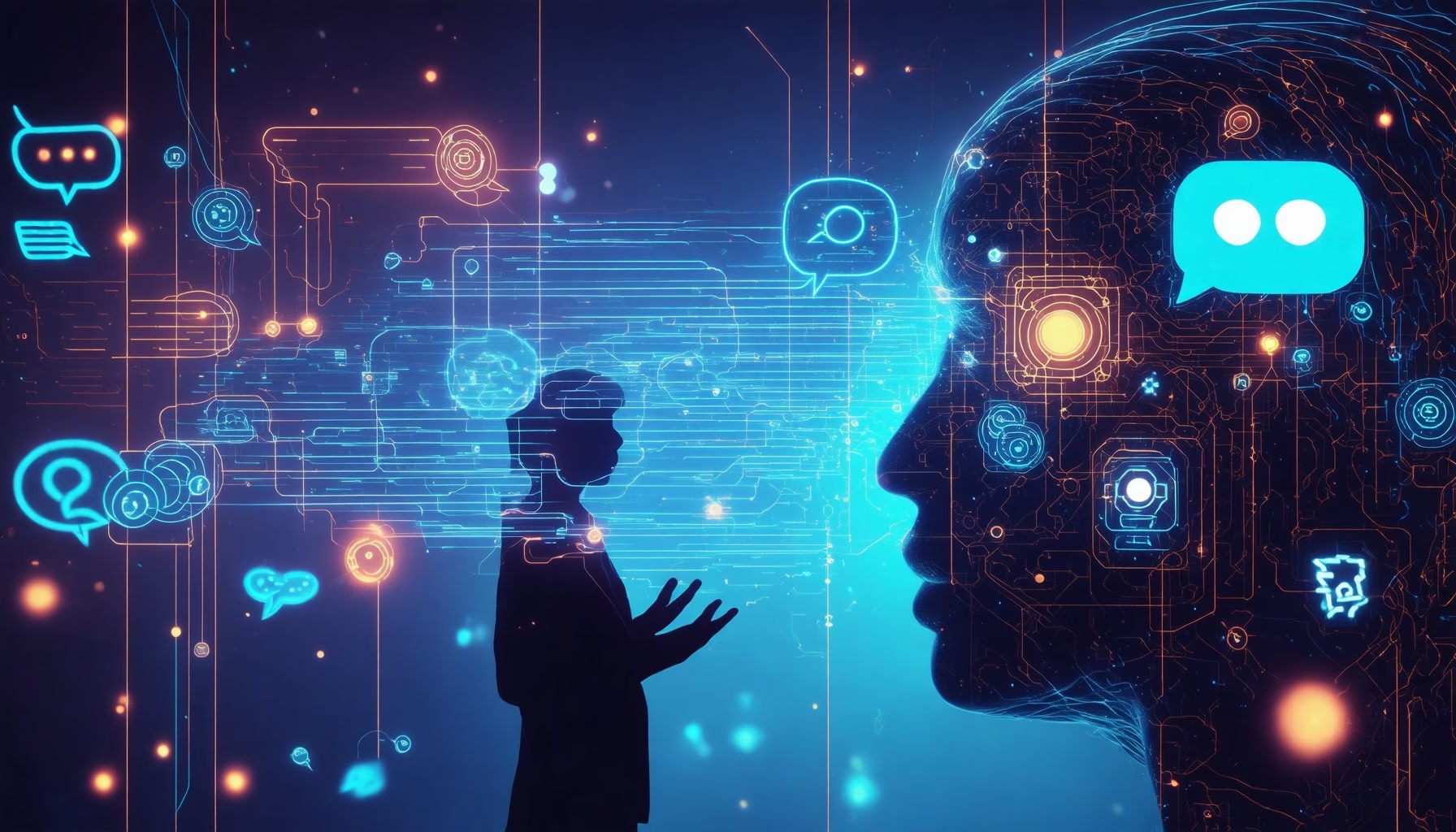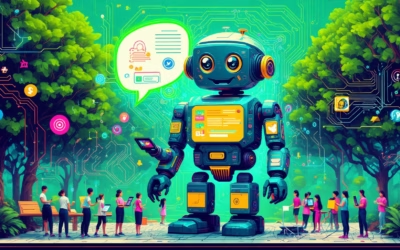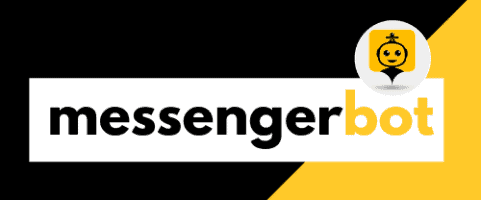Key Takeaways
- Master ChatFuel for Facebook: Learn to create engaging chatbots that enhance customer interactions on Messenger.
- User-Friendly Design: Utilize ChatFuel’s drag-and-drop interface for easy bot creation, requiring no coding skills.
- AI Integration: Leverage AI-powered responses to automate customer inquiries and improve user experience.
- Analytics Insights: Use built-in analytics tools to track engagement and optimize chatbot performance effectively.
- Rich Media Support: Engage users with diverse media formats, including images and videos, for interactive conversations.
- Cost-Effective Automation: Reduce customer service costs by implementing automated responses and interactions through ChatFuel.
- Scalability: Easily scale your chatbot to handle increased user interactions as your business grows.
In the rapidly evolving landscape of digital communication, mastering ChatFuel for Facebook has become essential for businesses looking to enhance their customer engagement through innovative chatbot solutions. This comprehensive guide will delve into the intricacies of utilizing ChatFuel within Facebook Messenger, exploring its pivotal role in automating interactions and improving user experience. We will cover key topics such as identifying bot behavior in Facebook chats, integrating AI chat features, and understanding the differences between Facebook chat and Messenger. Additionally, we will examine the functionality of the ChatFuel app and compare it with alternatives like ManyChat. By the end of this article, you will have a clear understanding of how to leverage ChatFuel effectively, ensuring your brand stays ahead in the competitive digital marketplace.
Is ChatFuel for Facebook Messenger?
Yes, ChatFuel is a platform designed specifically for creating chatbots for Facebook Messenger. It allows users to build conversational experiences without needing extensive coding knowledge. Here are some key features and insights about ChatFuel:
- User-Friendly Interface: ChatFuel offers a drag-and-drop interface that simplifies the process of designing chatbots, making it accessible for businesses of all sizes.
- Integration with Facebook Messenger: As a dedicated tool for Messenger, ChatFuel seamlessly integrates with Facebook’s messaging platform, enabling businesses to engage with customers directly through Messenger.
- AI-Powered Responses: ChatFuel utilizes artificial intelligence to provide automated responses, enhancing user interaction and ensuring that customers receive timely answers to their inquiries.
- Analytics and Insights: The platform provides analytics tools that allow users to track engagement metrics, helping businesses optimize their chatbot performance based on user interactions.
- Rich Media Support: ChatFuel supports various media formats, including images, videos, and carousels, allowing for more engaging and interactive conversations.
- Customization and Personalization: Users can customize their bots to reflect their brand’s voice and personality, creating a more personalized experience for users.
For further reading on the effectiveness of chatbots in enhancing customer engagement, refer to studies from sources like the Journal of Marketing Research and industry reports from platforms such as HubSpot and Gartner.
Understanding the Role of Chatbots in Facebook Messenger
Chatbots play a crucial role in enhancing customer interactions on Facebook Messenger. They serve as automated assistants that can handle a variety of tasks, from answering frequently asked questions to guiding users through complex processes. By leveraging AI technology, chatbots can provide personalized experiences that cater to individual user needs, significantly improving customer satisfaction.
Moreover, chatbots can operate 24/7, ensuring that users receive immediate responses regardless of the time of day. This constant availability not only boosts engagement but also helps businesses maintain a competitive edge in customer service. For businesses looking to implement chatbots, understanding their functionality and potential impact is essential. You can explore more about creating effective chatbots in our guide on Creating a Facebook Messenger Bot.
Benefits of Using ChatFuel for Facebook Messenger
Utilizing ChatFuel for Facebook Messenger offers numerous benefits that can enhance your business’s communication strategy:
- Cost-Effective Solution: By automating responses and interactions, ChatFuel reduces the need for extensive customer service teams, leading to significant cost savings.
- Increased Engagement: With interactive features and personalized responses, ChatFuel helps businesses engage users more effectively, fostering loyalty and repeat interactions.
- Scalability: As your business grows, ChatFuel can easily scale to handle increased user interactions without compromising performance.
- Data-Driven Insights: The analytics tools provided by ChatFuel allow businesses to gather valuable data on user behavior, enabling informed decision-making and strategy adjustments.
For a deeper dive into the advantages of using ChatFuel, check out our article on Facebook Messenger Chatbot Marketing.
How can you tell if someone is a bot on Facebook?
Identifying whether someone is a bot on Facebook can enhance your interaction experience. Here are some key indicators to help you discern bot behavior in Facebook chats:
Identifying Bot Behavior in Facebook Chats
To determine if someone is a bot on Facebook, consider the following indicators:
- Profile Characteristics: Bots often have incomplete profiles, generic profile pictures, or no friends. Check for a lack of personal information or posts that seem automated.
- Message Patterns: Bots typically respond quickly and may use repetitive phrases or responses. If the conversation feels scripted or lacks personalization, it may indicate a bot.
- Engagement Style: Observe how the user engages in conversations. Bots may struggle with nuanced questions or context, often providing irrelevant answers or failing to understand sarcasm.
- Activity Level: Bots may have a high volume of posts or messages in a short time frame, often sharing links or promotional content without genuine interaction.
- Response Time: If responses are instantaneous and consistent, it could be a sign of a bot. Human users typically have varied response times.
- Link Sharing: Bots often share links to external sites without context or personal commentary. If a user frequently sends links without engaging in conversation, they may be a bot.
- Use of Messenger Bots: Some users may employ Messenger Bots for automated responses. If you suspect this, try asking complex questions or requesting specific information that a bot may not handle well.
For further reading, refer to studies on social media behavior and bot detection, such as those published by the Pew Research Center and academic journals on digital communication.
Tools and Features to Differentiate Bots from Humans
Utilizing specific tools and features can significantly aid in distinguishing bots from human users on Facebook. Here are some effective methods:
- Facebook’s Built-in Features: Facebook provides options to report suspicious accounts or block users that seem automated. Familiarizing yourself with these features can enhance your safety and user experience.
- Third-Party Tools: Various tools are available that analyze user behavior and interactions. These can help identify patterns typical of bots, offering insights into the authenticity of accounts.
- Engagement Analysis: Monitoring how users engage with your posts can reveal bot-like behavior. Tools that track engagement metrics can help you identify unusual patterns in interactions.
- Chatbot Detection Software: Some software solutions are designed specifically to detect bots in messaging platforms. These tools can analyze conversation flows and identify automated responses.
For a deeper understanding of how to effectively engage with users on Facebook, consider exploring our guide on AI Messenger Bot Guide.
How to Get AI Chat on Facebook?
Integrating AI chat with ChatFuel on Facebook is a straightforward process that can significantly enhance user engagement. By following a few essential steps, you can set up an effective AI chat experience that meets your business needs.
Steps to Integrate AI Chat with ChatFuel
- Create a Facebook Page: If you don’t have one, set up a Facebook Page for your business or service. This is essential as AI chat features are integrated with Facebook Pages.
- Choose a Chatbot Platform: Select a chatbot platform that integrates with Facebook Messenger. Popular options include Chatfuel, ManyChat, and MobileMonkey. These platforms allow you to create AI-driven chat experiences without extensive coding knowledge.
- Connect Your Facebook Page: After selecting a platform, connect it to your Facebook Page. This usually involves logging into your Facebook account through the chatbot platform and granting necessary permissions.
- Design Your Chatbot: Use the platform’s tools to design your chatbot. Focus on creating engaging conversations, setting up automated responses, and defining user flows. Incorporate AI features to enhance user interaction, such as natural language processing (NLP) capabilities.
- Test Your Chatbot: Before launching, thoroughly test your chatbot to ensure it responds accurately and effectively to user queries. Make adjustments based on feedback and performance metrics.
- Launch and Promote: Once satisfied with the chatbot’s performance, launch it on your Facebook Page. Promote its availability through posts, ads, and other marketing channels to encourage user interaction.
- Monitor and Optimize: After launch, continuously monitor the chatbot’s performance using analytics provided by the chatbot platform. Optimize responses and flows based on user interactions and feedback.
For more detailed guidance, refer to resources like this tutorial on setting up your first AI chat bot.
Best Practices for Enhancing AI Chat Experience
To ensure that your AI chat experience is engaging and effective, consider the following best practices:
- Personalization: Tailor responses based on user data and preferences. Personalized interactions can significantly enhance user satisfaction.
- Clear Communication: Use simple language and clear prompts to guide users through conversations. Avoid jargon that may confuse users.
- Regular Updates: Keep your chatbot updated with the latest information about your products or services. Regular updates help maintain relevance and accuracy.
- Feedback Mechanism: Implement a feedback system to gather user insights. This can help you identify areas for improvement and enhance the overall experience.
- Analytics Utilization: Leverage analytics tools to track user interactions and performance metrics. Use this data to refine your chatbot’s responses and workflows.
By following these best practices, you can create a more engaging and effective AI chat experience on Facebook, ultimately driving better user engagement and satisfaction.
How does ChatFuel work?
ChatFuel is a powerful platform designed to create and manage chatbots for Facebook Messenger and other messaging applications. It operates on a user-friendly interface that allows businesses and individuals to build bots without any coding knowledge. Here’s how ChatFuel works:
- Visual Bot Builder: ChatFuel provides a drag-and-drop interface where users can create conversational flows. This visual builder allows users to design interactions by adding blocks for text, images, buttons, and quick replies, making it intuitive for non-technical users.
- AI-Powered Responses: The platform utilizes natural language processing (NLP) to understand user inputs and provide relevant responses. This feature enables the bot to engage in more human-like conversations, improving user experience.
- User Segmentation: ChatFuel allows for user segmentation based on interactions. This means businesses can tailor messages and offers to specific user groups, enhancing engagement and conversion rates.
- Integration with APIs: ChatFuel supports integration with various APIs, enabling bots to pull in data from external sources. This functionality allows for dynamic responses and real-time information delivery, such as order tracking or customer support.
- Analytics and Insights: The platform provides analytics tools to track user interactions and engagement metrics. This data helps businesses optimize their chatbot performance and improve customer service strategies.
- Broadcasting Messages: Users can send broadcast messages to all subscribers or specific segments, allowing for targeted marketing campaigns and updates.
- Support for Multiple Platforms: While primarily focused on Facebook Messenger, ChatFuel can also be integrated with other messaging platforms, expanding its usability across different channels.
Overview of ChatFuel’s Functionality and Features
ChatFuel’s functionality is designed to streamline communication and enhance user engagement. By leveraging AI technology, it allows businesses to automate responses and create personalized experiences for users. The platform’s analytics tools provide valuable insights into user behavior, enabling continuous improvement of chatbot interactions. For more detailed insights into ChatFuel’s functionalities and best practices, refer to the official ChatFuel documentation and resources from industry experts.
Setting Up Your ChatFuel Facebook Account
To set up your ChatFuel Facebook account, follow these simple steps:
- Create a ChatFuel Account: Visit the Messenger Bot website and sign up for a new account.
- Connect Your Facebook Page: Once registered, link your Facebook page to ChatFuel. This connection allows your bot to interact with users on Messenger.
- Design Your Bot: Use the visual bot builder to create your chatbot’s conversational flows. Add various elements like text, images, and buttons to enhance user interaction.
- Test Your Bot: Before going live, test your bot to ensure it responds correctly to user inputs. This step is crucial for optimizing the user experience.
- Launch and Monitor: After testing, launch your bot and monitor its performance using the analytics tools provided by ChatFuel.
By following these steps, you can effectively set up your ChatFuel Facebook account and start engaging with your audience through automated conversations.
Is there a difference between Facebook chat and Messenger?
The distinction between Facebook Chat and Messenger lies primarily in their functionality and user experience. Understanding these differences can help users choose the right tool for their communication preferences.
Comparing Facebook Chat and Messenger: Key Differences
- Real-Time Interaction vs. Asynchronous Communication: Facebook Chat is designed for instant communication, often utilized for real-time support and immediate engagement. It allows users to have live conversations, making it ideal for quick queries and customer service interactions. Messenger, on the other hand, offers a more flexible communication style, akin to traditional texting apps. Users can respond at their convenience, which is beneficial for conversations that do not require immediate replies.
- User Interface and Features: Facebook Chat is integrated directly within the Facebook platform, providing a seamless experience for users already engaged with the social media site. It includes basic features such as text messaging, emojis, and the ability to send images. Messenger is a standalone app that enhances the messaging experience with additional features like voice and video calls, group chats, and the ability to send money. This app is designed to facilitate a broader range of communication options beyond simple text.
- Accessibility and Integration: While Facebook Chat is accessible only through the Facebook website or app, Messenger can be used independently on various devices, including smartphones and tablets. This accessibility allows users to stay connected even when they are not logged into Facebook.
- Bots and Automation: Messenger supports the integration of bots, which can automate responses and provide users with instant information or assistance. This feature is particularly useful for businesses looking to enhance customer service through automated interactions.
Use Cases for Facebook Chat vs. Messenger
Choosing between Facebook Chat and Messenger depends on the specific needs of the user or business:
- Customer Support: For businesses that require immediate responses, Facebook Chat is ideal for real-time customer support. It allows agents to engage with customers instantly, addressing their concerns without delay.
- Marketing and Engagement: Messenger is better suited for marketing campaigns that leverage chatbots. Businesses can create automated workflows using ChatFuel to engage users in a more personalized manner, enhancing user experience and satisfaction.
- Social Interaction: For casual conversations among friends, Messenger offers a richer experience with its multimedia features, making it the preferred choice for social interactions.
In summary, while both Facebook Chat and Messenger serve the purpose of communication, they cater to different user needs—Chat for immediate, real-time interactions and Messenger for more flexible, feature-rich conversations. For further insights, refer to sources like Facebook’s official help center and industry analyses on messaging trends.
What is the ChatFuel app?
Chatfuel is a powerful platform developed by 200 Labs that enables users to create AI-driven chatbots for various messaging applications, including WhatsApp, Instagram, and Facebook Messenger. The app is designed to automate customer interactions, streamline business processes, and enhance user engagement through conversational interfaces.
Features and Benefits of the ChatFuel App
Chatfuel offers several key features that make it an essential tool for businesses looking to leverage chatbot technology:
- User-Friendly Interface: Chatfuel provides a no-code interface, allowing businesses to build chatbots without any programming knowledge. This accessibility empowers users to create customized bots tailored to their specific needs.
- Integration Capabilities: The app seamlessly integrates with various third-party services, enabling businesses to connect their chatbots with CRM systems, e-commerce platforms, and other tools to enhance functionality and data management.
- AI-Powered Responses: Utilizing natural language processing (NLP), Chatfuel’s chatbots can understand and respond to user inquiries effectively, providing personalized experiences that improve customer satisfaction.
- Analytics and Insights: Chatfuel provides robust analytics tools that allow businesses to track user interactions, measure engagement, and optimize chatbot performance based on real-time data.
- Multi-Platform Support: In addition to Facebook Messenger, Chatfuel supports deployment on Instagram and WhatsApp, making it a versatile solution for businesses looking to reach customers across multiple channels.
How to Access ChatFuel Facebook Login and Sign Up
To get started with Chatfuel, users can easily access the platform by visiting the Chatfuel Official Site. The sign-up process is straightforward, requiring users to create an account using their Facebook credentials. Once logged in, users can begin building their chatbots and integrating them with their Facebook pages.
For those interested in exploring more about the functionalities of Chatfuel, I recommend checking out the Understanding Facebook Chatfuel guide for a deeper dive into its capabilities.
Exploring Alternatives: ManyChat Facebook
When considering options for Facebook integration, ManyChat emerges as a prominent alternative to ChatFuel. Both platforms offer robust features for creating chatbots, but they cater to different user needs and preferences. Understanding these differences can help you make an informed decision about which tool best suits your business requirements.
Comparing ChatFuel and ManyChat for Facebook Integration
ChatFuel and ManyChat both provide powerful solutions for automating interactions on Facebook Messenger. Here’s a breakdown of their key features:
- User Interface: ManyChat is often praised for its user-friendly interface, making it easier for beginners to navigate and create bots. ChatFuel, while also intuitive, may require a steeper learning curve for those unfamiliar with chatbot development.
- Pricing: ManyChat offers a free tier with essential features, while ChatFuel provides a free plan with limitations on the number of users. For businesses looking to scale, both platforms have paid plans that unlock advanced functionalities.
- Customization: ChatFuel allows for extensive customization through JSON API and webhooks, making it ideal for developers. ManyChat focuses on visual flow creation, which can be more accessible for non-technical users.
- Marketing Tools: ManyChat includes built-in marketing tools such as broadcast messaging and growth tools, which can enhance user engagement. ChatFuel also offers marketing features but may require additional setup.
Ultimately, the choice between ChatFuel and ManyChat depends on your specific needs, technical expertise, and budget. For a more detailed comparison, you can explore Chatfuel Official Site and ManyChat Homepage.
Choosing the Right Platform for Your Facebook Chat Needs
When selecting the right platform for your Facebook chat needs, consider the following factors:
- Business Goals: Define what you want to achieve with your chatbot. If your focus is on lead generation and marketing, ManyChat’s tools may be more beneficial. For complex integrations and custom solutions, ChatFuel might be the better choice.
- Technical Resources: Assess your team’s technical capabilities. If you have developers who can leverage APIs, ChatFuel offers more flexibility. For teams without technical expertise, ManyChat’s visual builder can simplify the process.
- Budget: Evaluate your budget for chatbot solutions. Both platforms offer free trials, allowing you to test their features before committing to a paid plan.
By carefully considering these factors, you can choose the platform that aligns best with your business objectives and enhances your customer engagement strategy. For further insights into chatbot functionalities, visit Creating a Facebook Messenger Bot.







